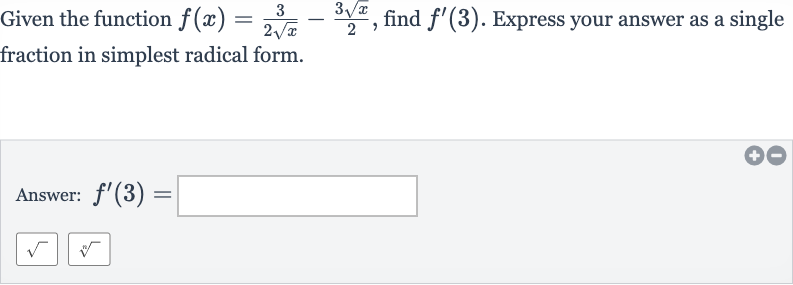AI tutor
Welcome to Bytelearn!
Let’s check out your problem:

Given the function , find . Express your answer as a single fraction in simplest radical form.Answer:
Full solution
Q. Given the function , find . Express your answer as a single fraction in simplest radical form.Answer:
- Rewrite function: First, we need to find the derivative of the function . Let's start by rewriting the function in a form that makes it easier to differentiate.
- Differentiate function: Now, let's differentiate the function using the power rule, which states that the derivative of with respect to is .
- Simplify derivative: Simplify the expression for the derivative.
- Evaluate at : Now, we need to evaluate the derivative at .
- Calculate values: Calculate the values of and .
- Substitute values: Substitute these values into the expression for .
- Combine terms: Simplify the expression by combining the terms.
- Simplify expression: Simplify the fraction by canceling out common factors.
